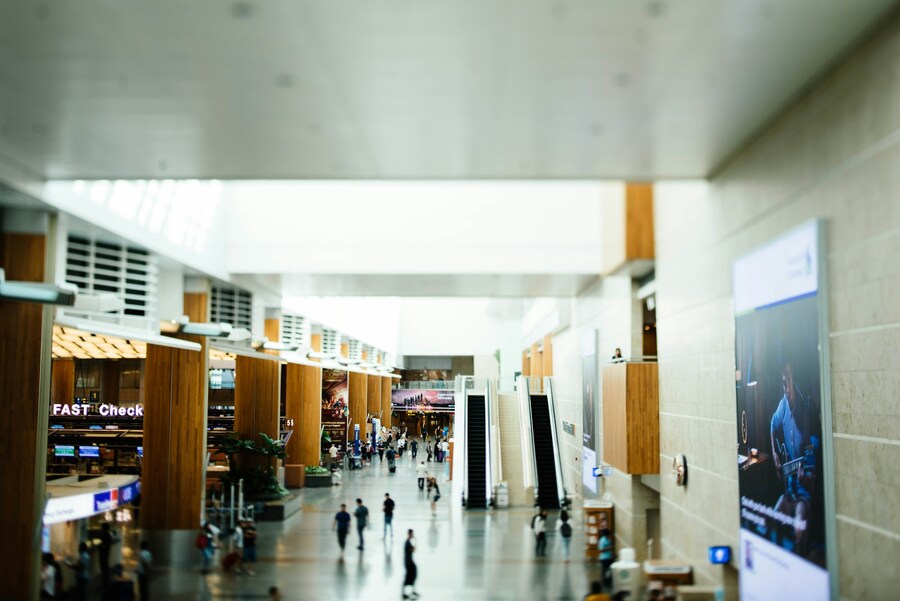The anxiety of modern air travel – from delays to the security checkpoint – often results in a completely natural physiological response: sweating. While innocent, excessive perspiration can become a major complication at airport security. This seemingly harmless reaction can flag you for additional screening due to the dual nature of security: Advanced Imaging Technology (AIT) and behavior observation techniques. Whether due to a medical condition or simple travel stress, profuse sweating can move you from the standard line to a thorough examination. Understanding why this bodily function triggers a security red flag is the first step in avoiding delays. So, let's unpack the reasons!
Can your nervous sweat actually trigger a security alarm?
For the seasoned traveler, navigating airport security can feel like a well-choreographed dance, yet for those who exhibit heightened signs of nervousness, the process can quickly deviate from the script. Excessive sweating is one of the clearest and most visible deviations from baseline behavior, and it's observed by Transportation Security Administartion (TSA) personnel for two distinct, yet interconnected, reasons: one rooted in psychology and behavioral science, and the other purely in the physics of security technology. This dual-layered scrutiny means that a traveler must contend with both human judgment and machine sensitivity, making the simple act of perspiring a surprisingly complex security issue.
Why does sweating make us worry?

Source: Nik/Unsplash
The worry surrounding excessive perspiration stems from the protocols used by trained security personnel to identify non-verbal cues that may suggest a person is concealing "mal-intent." Security agencies have historically employed programs, sometimes known as Behavior Detection and Analysis (BDA), where specially trained officers scrutinize the flowing streams of passengers for signs of extreme stress, fear, or deception. The underlying, though widely debated, premise of these programs is that individuals harboring illicit items or dangerous intentions will exhibit observable psychological and physiological indicators that betray their true state.
Sweating, especially when profuse and seemingly disproportionate to the ambient temperature or physical exertion, falls squarely into this category of anomalous behavior. A person who is profusely sweating in an air-conditioned terminal or whose clothing appears visibly damp around the armpits or torso without having just completed a strenuous activity, may be deemed an elevated risk. The logic used by these officers is that carrying a concealed threat – whether it be an explosive component, fraudulent documents, or other contraband – induces a massive adrenaline surge and an extreme nervous response, which then manifests in uncontrolled bodily functions. The security officer, often dressed in plain clothes or blending subtly into the environment, is trained to detect these involuntary stress reactions. Other common behavioral indicators on the checklist include excessive throat clearing, nervous fiddling with clothes or baggage, rapid eye movements or a complete lack of eye contact, and even subtle ticks like exaggerated yawning or foot-tapping. It's important to note that the scientific validity of reliably linking these non-verbal cues to malicious intent has been heavily criticized by numerous expert groups and government watchdogs. They argue that these signs are incredibly subjective and often simply reflect the natural stress of travel, a fear of flying, a medical condition, or even cultural differences. However, the presence of excessive perspiration, in conjunction with one or more other "anomalous" behaviors, may provide a security officer with the justification needed to initiate a secondary screening or what is sometimes termed a "casual conversation," which is, in fact, an investigative interview designed to resolve the perceived anomaly. The traveler is thus caught in a difficult bind: their completely natural, defensive physiological reaction to an intimidating environment is precisely what raises the initial alarm. For those who suffer from conditions like generalized anxiety disorder or hyperhidrosis (chronic excessive sweating), the mere anticipation of the security check can initiate the very reaction the security staff is trained to look for, creating an unfortunate and stressful feedback loop.
What if you experience this?
.jpg)
Source: Google Search
Beyond the psychological or behavioral alarm, excessive perspiration can also trigger the mechanical systems of the security checkpoint, specifically the Advanced Imaging Technology (AIT) scanners. These machines, which use millimeter waves to detect objects concealed beneath clothing, are incredibly sophisticated, yet they are still susceptible to false positives triggered by variations in material density. A core physical principle is at play: millimeter waves reflect off water. When a person is sweating heavily, the added moisture – essentially a layer of saline water – saturates the clothing fibers, altering the material's density and its reflective properties. This saturation is particularly problematic in areas where clothing naturally adheres to the body, such as the lower back, chest, or groin area. The AIT machine interprets this localized increase in moisture and density as a foreign, potentially threatening object, leading to a visible alarm on the officer's screen, often appearing as a yellow box around the affected area.
When the technology alarms, regardless of the cause, the TSA officer is mandated to resolve the issue. This almost always necessitates a secondary screening, which typically involves a physical pat-down of the area where the machine is alarmed. This can be embarrassing and time-consuming, but the traveler must comply to continue their journey. The most effective way to manage this technical sensitivity is through preparation and communication. Travelers who know they are prone to sweating, whether due to a medical issue, nervousness, or simply the summer heat, should consider a few precautionary steps. First, choose clothing made from moisture-wicking fabrics, such as performance synthetics or merino wool, over thick cotton. These materials draw moisture away from the skin and dry quickly, minimizing the density-altering effect. Second, if you have a known condition or are feeling acutely nervous, you can proactively mention it to the TSA agent before entering the scanner. A simple, polite statement such as, "I apologize, I have a known anxiety condition and am prone to excessive sweating," can preemptively explain the physiological signs.
Preparation for a flight is key to minimizing all forms of airport stress, including the kind that leads to profuse sweating. This preparation should extend to the logistics of your journey. Many frequent flyers find that securing a spot in an airport parking lot well in advance greatly reduces the rush and uncertainty that leads to stress at the terminal curb. Services like ParkingNearAirports.io specialize in simplifying this part of the journey, offering not just a guaranteed space, but often valuable parking discounts and highly competitive airport parking offers that allow travelers to save money and time. By managing the variables you can control – like pre-booking affordable off-site parking with a shuttle service – you reduce the overall stress burden, which, in turn, can mitigate the anxiety that might otherwise manifest as excessive perspiration at the checkpoint. By taking control of the travel experience from the moment you leave your home, you are less likely to arrive at the security line in a frantic, overheated state. If a pat-down is required, the best approach is to remain calm, follow the officer's instructions exactly, and remember that you have the right to request a private screening and a travel companion to be present, though the companion must first clear security themselves. Remaining respectful, cooperative, and communicative is the fastest path to resolving the alarm and proceeding to your gate.
Other things that might set off alarms

Source: CHUTTERSNAP/Unsplash
While sweating is a specific and surprising trigger, it's part of a much broader, subjective framework of behavioral screening that officers are trained to observe. This framework encompasses a wide range of actions that are common among nervous travelers but are nonetheless interpreted as potential indicators of stress or deception. These subtle, non-criminal actions, when viewed in combination, contribute to a cumulative score that can trigger a mandatory secondary screening. The list of these indicators is long and often contradictory, highlighting the difficulty and subjectivity inherent in such a system.
For instance, an officer might observe a traveler whose behavior oscillates wildly: they may be deemed suspicious for gazing down at their feet – a sign of submission or concealment – yet they could also be flagged for having widely open, staring eyes or constantly looking at other travelers or associates, behaviors that suggest hyper-vigilance or surveillance. Similarly, a traveler may be seen as suspicious for giving non-answers to questions, a sign of evasion, but they could also be flagged for being overly specific with answers, which can be interpreted as having rehearsed a cover story. Other frequently cited indicators include common stress reactions like fidgeting, unusually pale or flushed skin, or any type of involuntary, sudden movement. The list also includes highly subjective criteria, such as wearing improper attire for the climate, which is open to individual interpretation, or displaying exaggerated emotions, which could simply be a person's natural disposition or reaction to a loved one. The inherent contradiction in many of these cues – where a person is scrutinized whether they look down or look around, whether they say too little or too much – is the basis of the ongoing debate surrounding the effectiveness and fairness of such behavioral detection methods. The key takeaway for any traveler is to be aware that your non-verbal communication is being constantly assessed. Therefore, the best defense against triggering a behavioral alarm is simply to be prepared, move with purpose, and engage courteously and directly with any officer who addresses you. When asked a question, provide a concise, factual answer, and then continue with the screening process calmly. Accepting that the process can feel intrusive but is necessary for security is the best way to project a demeanor of confidence and calm.
Conclusion
Excessive sweating can trigger security alarms in two ways: it's a behavioral cue that security officers look for as a sign of extreme stress or deception, and the resulting moisture alters clothing density, causing the Advanced Imaging Technology (AIT) machine to flag a potential anomaly. To prevent these time-consuming secondary screenings, be proactive: minimize travel stress by planning ahead, wear moisture-wicking clothing, and if necessary, politely communicate any condition like anxiety or hyperhidrosis to the TSA officer. By understanding these triggers and maintaining a calm, cooperative demeanor, you turn a potential red flag into a smooth journey. May your travels be swift, stress-free, and perfectly dry!






